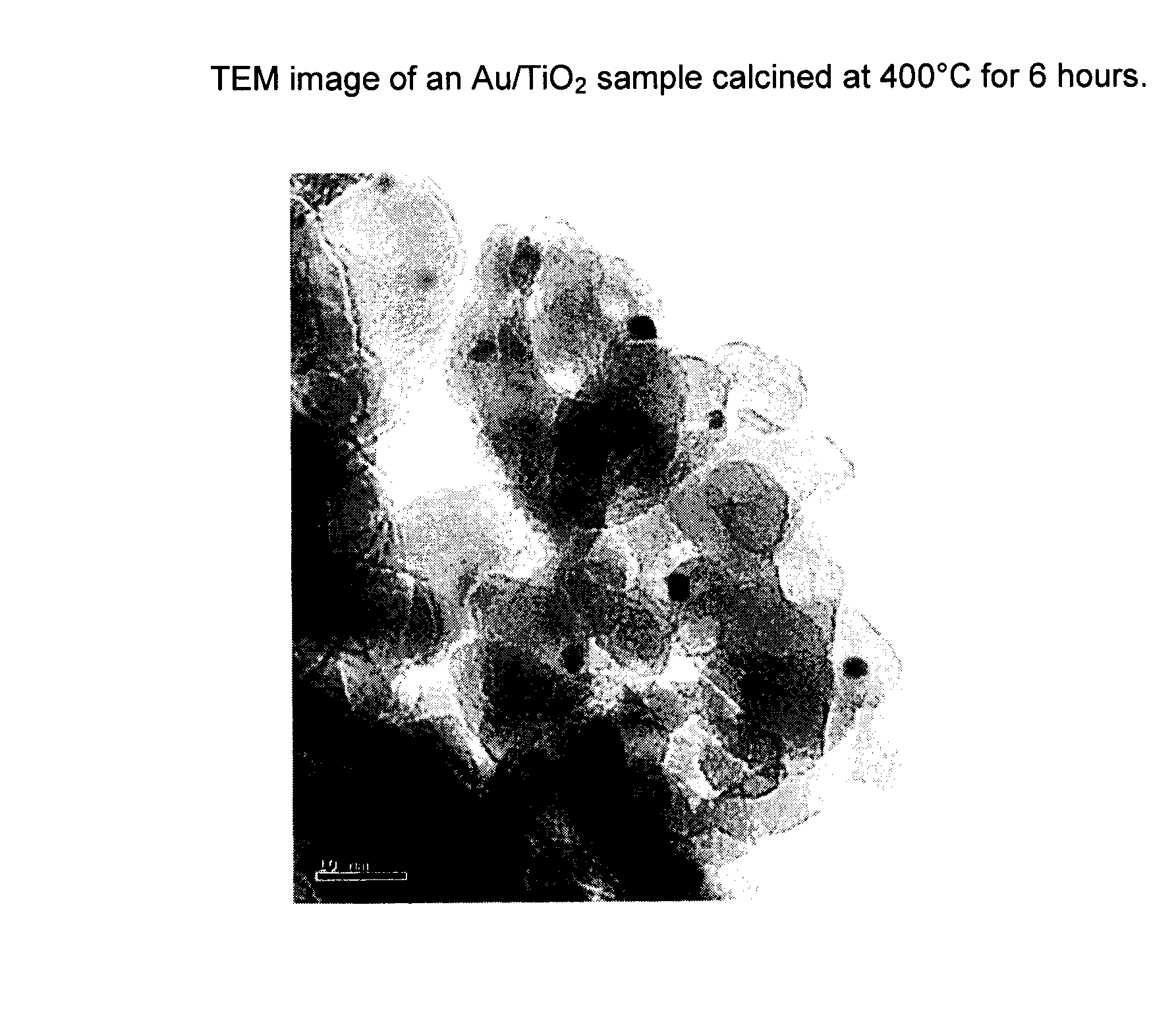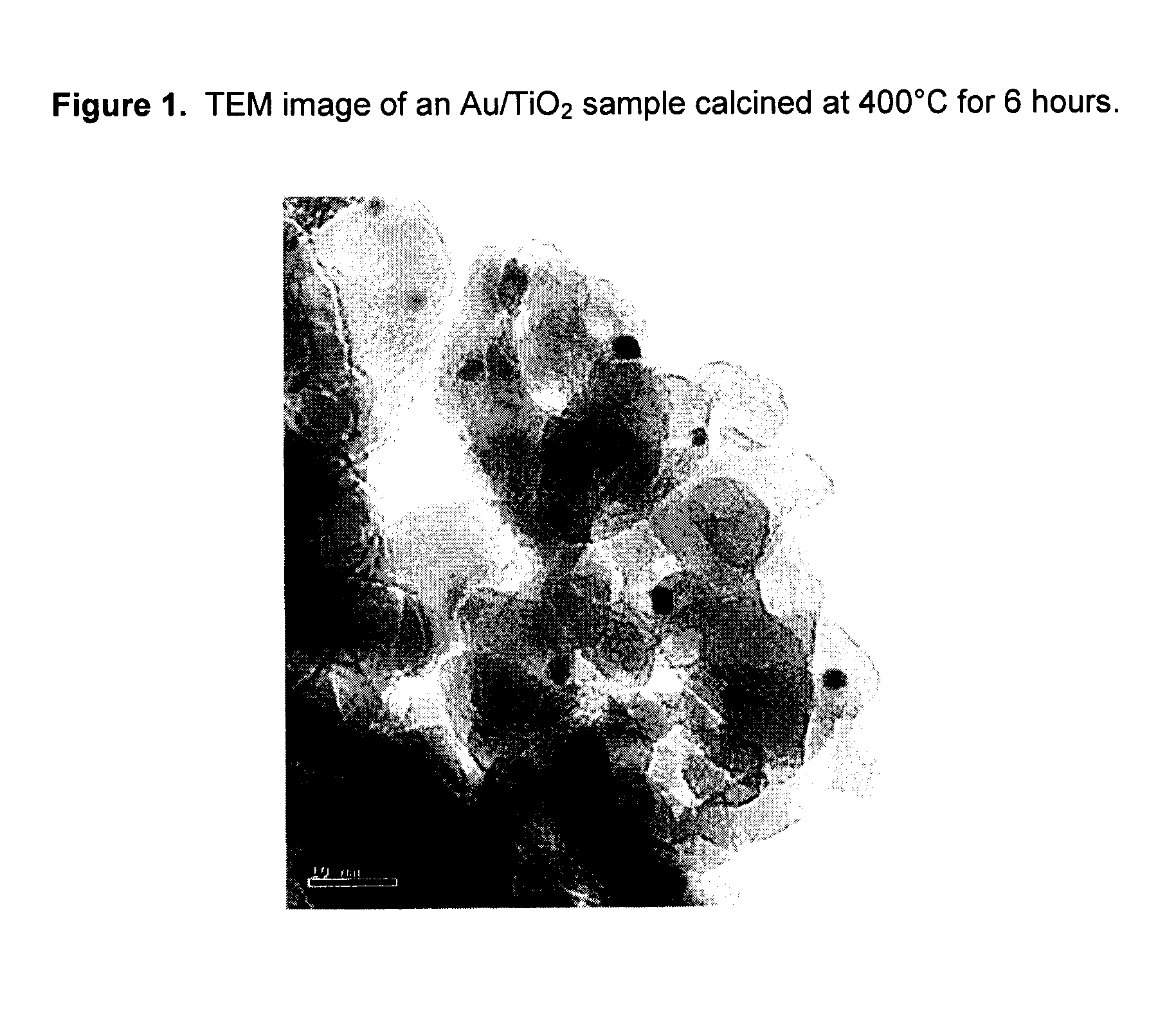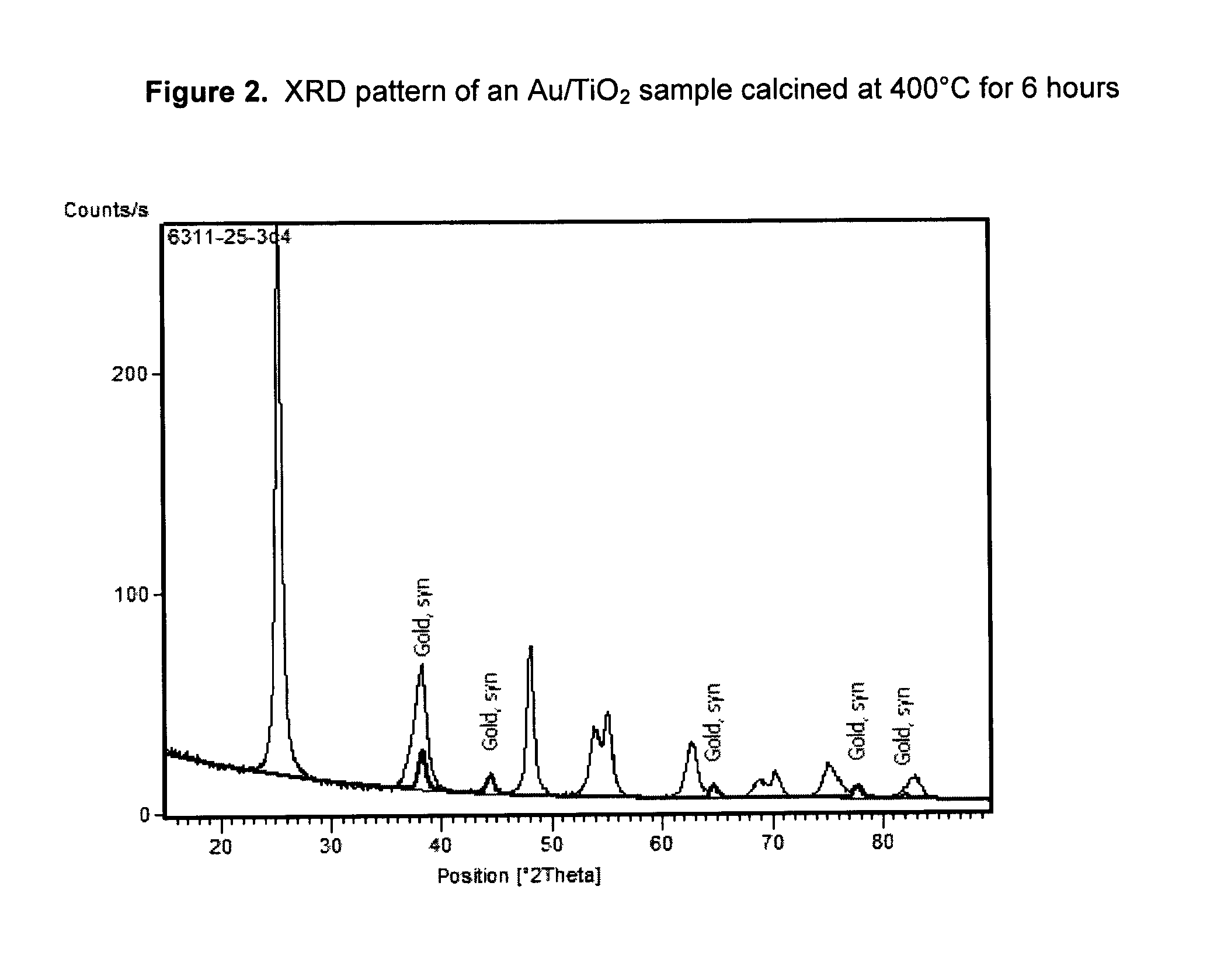Supported precious metal catalysts via hydrothermal deposition
a precious metal catalyst and hydrothermal deposition technology, which is applied in the direction of metal/metal-oxide/metal-hydroxide catalysts, physical/chemical process catalysts, other chemical processes, etc., can solve the problem of reducing the effective surface area and affecting the stability of precious metal catalyst particles
- Summary
- Abstract
- Description
- Claims
- Application Information
AI Technical Summary
Benefits of technology
Problems solved by technology
Method used
Image
Examples
example 1
[0044]A 2 wt % gold catalyst on a TiO2 support was prepared by the following procedure. A slurry of Tiona® G1, an ultrafine TiO2 product made out of the so-called “sulfate process” by Millennium Inorganic Chemicals, was neutralized to pH 9 with an ammonia solution and washed thoroughly to remove the sulfate ions in the slurry. A sample of the washed Tiona® G1 containing 24 g TiO2 was then reslurried with 216 g of deionized water to make 10% TiO2 slurry. Separately, 0.97 g of NaAuCl4.2H2O (0.48 g of gold, Alfa Aesar) was dissolved in 40 g of deionized water, to which was added, in order, 20 g ethanol (Fisher, Reagent Grade) and 7 g stearic acid (99%, Alfa Aesar). The gold solution was stirred for about 15 minutes and was added to the TiO2 slurry prepared above. The Au / TiO2 mixture was stirred for another 15 minutes before transferring into three stainless steel bomb reactors lined with Teflon cups and lids (125 ml, Parr Instruments). The bomb reactors were put in a roller oven and th...
example 2
[0045]A 1 wt % platinum catalyst on TiO2 support was prepared by the same procedure as for Example 1, except that 0.57 g of Na2PtCl4.xH2O (O.24 g of platinum, Alfa Aesor) was used for platinum deposition. The platinum deposition was carried hydrothermally at 80° C. for 18 hours. A TEM image (FIG. 2) of a Pt / TiO2 sample calcined at 400° C. for 6 hours showed that Pt particles having an average particle size smaller than 5 nm were deposited on the surface of TiO2.
example 3
[0046]A 4 wt % silver catalyst on a TiO2 support was prepared by the same process as for Example 1, except that 1.5 g of AgNO3 (0.96 g of Ag, Alfa Aesor) was used for silver deposition. The deposition reaction was carried out under hydrothermal conditions at 90° C. for 18 hours. TEM measurement on a 400° C. calcined Ag / TiO2 sample indicated that silver particles having an average particle size smaller than 5 nm were deposited on the surface of TiO2.
PUM
| Property | Measurement | Unit |
|---|---|---|
| particle size | aaaaa | aaaaa |
| temperature | aaaaa | aaaaa |
| temperature | aaaaa | aaaaa |
Abstract
Description
Claims
Application Information
 Login to View More
Login to View More - R&D
- Intellectual Property
- Life Sciences
- Materials
- Tech Scout
- Unparalleled Data Quality
- Higher Quality Content
- 60% Fewer Hallucinations
Browse by: Latest US Patents, China's latest patents, Technical Efficacy Thesaurus, Application Domain, Technology Topic, Popular Technical Reports.
© 2025 PatSnap. All rights reserved.Legal|Privacy policy|Modern Slavery Act Transparency Statement|Sitemap|About US| Contact US: help@patsnap.com



